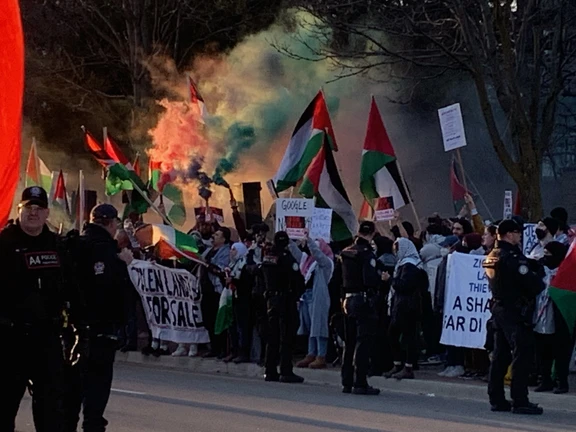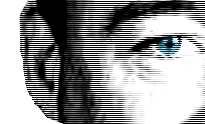
— Feature, Musings —03.30.2024 03:32 PM
My latest: safety zones, now
Bubble zones: they work.
Bubble zones – or “buffer zones,” “safe access zones” or access zones” – first started to show up in the early 1990s. Back then, women seeking legal abortions, or just seeking advice, were routinely being harassed and threatened at clinics and hospitals that provide those services.
Going back to 1984, doctors offices and abortion clinics in the U.S. were being bombed. One doctor was shot to death at a clinic in Florida in 1993. A clinic volunteer was murdered in 1994, again in Florida. And, across the United States and Canada, women were being threatened and attacked for coming near places that provided safe and legal abortions.
In 2000, Dr. Henry Morgantaler told this writer that he had received “untold thousands” of death threats over the years. And that he, his staff and his patients regularly needed protection from violence.
So, legislatures started to create what are often called bubble zones. That is, defined areas where certain activities are against the law – initially, to protect doctors, nurses and women providing or seeking abortions. By creating a designated buffer zone around a clinic, police were compelled to act: if an anti-abortion lunatic crossed the line, they’d get arrested. Simple.
It’s now apparent that we need to do likewise for Canada’s 400,000 Jews – around their places of worship, in particular. The pro-Hamas, Jew-hating mobs have targeted Jewish businesses, community centres, schools and synagogues. Police weren’t preventing the attacks, or they weren’t doing enough to keep the haters away.
So, create bubble zones around those places where Jews are most vulnerable. Like synagogues.
Quebec (surprisingly, given the province’s documented problems around anti-Semitism) went first. Earlier in March, the Quebec Superior Court made history. The Court ordered that groups associated with extremism – Montreal4Palestine, Palestinian Youth Movement Montreal, Alliance4Palestine – stay at least 50 metres away from Jewish institutions in predominantly-Jewish areas of Montreal, Notre Dame de Grace and Cote-des-Neiges.
Then, a few days later, Vaughan mayor Steven Del Duca proposed the same thing for his city. Del Duca urged councillors in the city North of Toronto to approve a bylaw that would prevent protests near places or worship, schools and could care centres. The objective, Del Duca said, was to stop those who “incite hatred, intolerance and violence” in such places.
Del Duca’s law would keep the Israel-haters 100 metres away from designated places. Anyone who violated the law would face fines up to $100,000.
Now, Toronto councillor Brad Bradford is pushing for a similar law in Canada’s largest city. Bradford wrote to Ontario’s Attorney-General to call for the creation of what he called “safety zones” around places of worship, but also important social infrastructure. That addition is welcome, too, because the pro-Hamas mobs have shown their willingness to block major roadways and target hospitals.
“A shocking 56 per cent of incidents have been anti-Semitic and target Toronto’s Jewish community,” Bradford said in his letter.
In an interview, Bradford explained why he took action: “Over the past six months, there has been an absence of leadership at City Hall when it comes to ensuring people have the right to practice their faith in peace without fear of violence or persecution. We’ve seen businesses attacked because of who owns them, we’ve seen neighbourhoods targeted because of who lives there, and it continues to undermine the diversity, tolerance, and acceptance that used to be the hallmark of Toronto…It has to stop.”
Establishing safe zones, Bradford says, “would be a meaningful step that would provide another [way] to stamp out hate and start to restore the type of civility and tolerance we ought to expect in a city like Toronto.”
Brad Bradford is right – as are the other leaders in Quebec and Ontario who are taking action. We need to protect people when they are at prayer – when they are most vulnerable. We need to make neighbourhoods feel safe again.
Establishing safe zones, as Bradford calls them, would do just that.
Will Canada’s other leaders follow his lead?


Warren,
Do I expect municipalities to move ahead with safety zones? Nope. Municipal councils seemingly are more often than not stacked with people who are at least sympathetic to the Palestinian cause and indifferent to the Israeli one.
So…will we see safety zones? Sure, but in almost all cases, I expect to see them implemented by way of an injunction. Thank God for judges and the courts.
I’m actually quite shocked that Quebec, land of Bill 21 “secularism” and “pur laine” nationalism (i.e., not-so-thinly-veiled racism) actually went first. I keep telling anyone who will listen that Quebec does not deserve its “progressive” bona fides – outside the West Island, it’s basically Alabama. Perhaps things are starting to change.
Gord,
We’re progressive. Our main fault is that we are overly insular and myopic. We’re French in this province, you know, the language that most provinces only pay lip service to since 1867. Bilingual Canada…what total bullshit.
They are proposing something similar here in Manitoba, with regard to medical facilities that perform abortions. A “safety zone” around the facility that prohibits pro-life protests of any type.
Other groups are now demanding that, if this law comes to pass, it should also include other forms of protest around other types of facilities. For example, a ban on climate change protests around traditional energy company headquarters.
Regardless of your views on any individual topic, it is an interesting area of discussion. At what point does the proper protection of “safety” blend into an improper suppression of protesting?
My view is that the protestors have brought this on themselves. We have slid downhill from peaceful protests, into an era of aggressive and confrontational protesting. People are now like spoiled children, stomping their feet and throwing their toys when they don’t get their way.